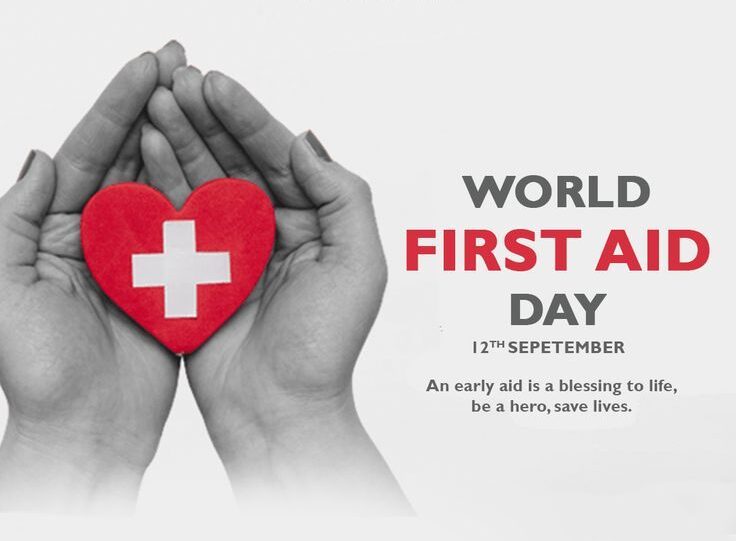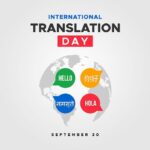🩹 Introduction: When Every Second Counts
Imagine witnessing a road accident, a child choking, or someone fainting in front of you. Would you know what to do? Could you help save a life?
- 🩹 Introduction: When Every Second Counts
- 🗓️ Timeline: How World First Aid Day Evolved
- 📚 History: From Battlefields to Backyards
- ❗ 7 Life-Saving Truths Everyone Should Know About First Aid
- 🧠 Fascinating Facts About First Aid
- ❓ FAQs About World First Aid Day
- 🎯 Significance: Why World First Aid Day Matters
- 🌍 How It’s Observed Globally
- 🙏 Wishing Messages for World First Aid Day
- 🏥 Importance in Our Life: Real-World Impact
- ⚠️ Important Points Recap
- 🧭 Conclusion: Empowerment That Could Save a Life
That’s the power of First Aid — it transforms ordinary people into first responders. And that’s why World First Aid Day, celebrated every second Saturday of September, is so important. It reminds us that simple knowledge can make the difference between life and death.
Let’s explore the history, facts, significance, and observance of this vital global day that empowers millions with the skills to act in an emergency.
🗓️ Timeline: How World First Aid Day Evolved
| Year | Milestone |
|---|---|
| 1863 | The International Committee of the Red Cross (ICRC) was founded. |
| 1870 | The idea of organized First Aid training began during the Franco-Prussian War. |
| 1881 | First Aid courses started gaining popularity across Europe. |
| 2000 | The International Federation of Red Cross and Red Crescent Societies (IFRC) launched World First Aid Day. |
| Now | Celebrated in over 100 countries each year with campaigns, workshops, and community training sessions. |
📚 History: From Battlefields to Backyards
The concept of First Aid emerged in wartime, when untrained soldiers or civilians had to tend to injuries before professional help arrived. The Red Cross, inspired by humanitarian Henry Dunant, realized that early intervention could drastically reduce mortality.
As wars gave way to peacetime crises like accidents, cardiac arrests, strokes, or choking, First Aid training moved from military to civilian life. Today, everyone from schoolchildren to office workers is encouraged to learn these critical skills.
❗ 7 Life-Saving Truths Everyone Should Know About First Aid
First Aid Saves Lives
Immediate CPR can double or triple survival rates after cardiac arrest. In choking, early intervention can prevent brain damage.Anyone Can Learn It — and Should
You don’t need to be a doctor. A short training course can equip you with life-saving knowledge.Children Can Be First Aiders Too
Kids as young as 8 can learn how to call emergency services, treat cuts, or help someone unconscious.Mental First Aid Is Equally Important
First Aid now also includes psychological support in emergencies — like calming a trauma victim.Most Emergencies Happen at Home
Contrary to popular belief, you’re more likely to use First Aid at home than in public places.Delayed Help Can Be Fatal
In many countries, emergency services may take time to arrive — making your response crucial.First Aid Builds Confidence and Community
Knowing how to help empowers you and creates safer, more resilient communities.
🧠 Fascinating Facts About First Aid
🚑 Every year, 1 in 3 people globally faces a situation that needs First Aid.
❤️ Performing CPR within the first 2 minutes of a heart attack can increase survival chances by over 80%.
🩸 Bleeding control, or stopping a wound from bleeding out, is one of the most taught First Aid techniques.
🌍 Over 90% of accidents in low-resource countries are not treated in time due to lack of First Aid awareness.
🧍♂️ First Aid training improves not just emergency response, but also general safety consciousness.
❓ FAQs About World First Aid Day
Q1: When is World First Aid Day celebrated?
It is observed on the second Saturday of September every year. In 2025, it falls on September 13.
Q2: Who organizes World First Aid Day?
It is organized by the International Federation of Red Cross and Red Crescent Societies (IFRC) and celebrated globally.
Q3: Is First Aid certification mandatory?
While not mandatory in most places, many workplaces and schools recommend or require First Aid training for safety.
Q4: What’s included in a basic First Aid kit?
Bandages, antiseptic wipes, gloves, scissors, adhesive tape, CPR face shield, pain relievers, and instructions.
Q5: How long is a typical First Aid training course?
Basic certification courses can range from 4 hours to 2 days, depending on the organization and country.
🎯 Significance: Why World First Aid Day Matters
✅ Raises Awareness: Reminds people of the importance of First Aid education.
✅ Promotes Community Safety: Trained citizens are better prepared to handle crises.
✅ Saves Lives and Reduces Suffering: The faster help is provided, the fewer complications arise.
✅ Empowers Individuals: People feel more confident and less helpless in emergencies.
✅ Encourages Government Action: Governments are prompted to include First Aid in school curriculums and workplace policies.
🌍 How It’s Observed Globally
Across the world, this day is marked with:
👨🏫 Public Training Camps
Free sessions on CPR, bleeding control, choking response, and burns.🧒 Workshops for Children
Interactive, gamified learning for kids to understand emergency numbers and basic help.🎓 First Aid in Schools and Colleges
Institutions use this day to integrate emergency awareness into lessons.🏥 Medical Community Participation
Hospitals and clinics organize demos and distribute educational pamphlets.📱 Social Media Campaigns
Hashtags like #FirstAidDay, #BeAFirstAider, and #LifeSavingSkills trend globally.
🙏 Wishing Messages for World First Aid Day
Here are a few ways you can wish or promote the day:
“A skill for a lifetime — learn First Aid today. Happy World First Aid Day!”
“Being a hero doesn’t require a cape — just knowledge. #FirstAidMatters”
“To all those who step up in emergencies — we salute you today!”
“Let’s build a world where no one is helpless in a crisis. Happy First Aid Day!”
🏥 Importance in Our Life: Real-World Impact
In our fast-moving lives, anything can happen:
Your colleague collapses at the office.
Your child burns their hand on a stove.
Your parent slips and fractures a limb.
If you know First Aid, you don’t have to wait helplessly. You can:
✅ Stabilize injuries
✅ Control bleeding
✅ Perform CPR
✅ Prevent infection
✅ Calm panic and take control
First Aid is not just a skill, but a responsibility — one that can change the course of someone’s life in minutes.
⚠️ Important Points Recap
Observed on: Second Saturday of September (2025: Sept 13)
Organizer: International Federation of Red Cross and Red Crescent Societies
Focus: Training, awareness, and community empowerment
Origin: Rooted in the Red Cross mission since the 19th century
Skills Taught: CPR, bleeding control, burns, choking, fracture support, mental health aid
Participation: Schools, governments, NGOs, workplaces, and individuals
🧭 Conclusion: Empowerment That Could Save a Life
World First Aid Day isn’t just another observance — it’s a life-saving mission. It puts the power of rescue into the hands of everyday people. It turns bystanders into heroes. And it makes our homes, schools, and streets safer.
So take a pledge this year:
📌 Get trained
📌 Build a kit
📌 Teach someone else
Because someday, someone’s life might depend on what you know — and how fast you act.








